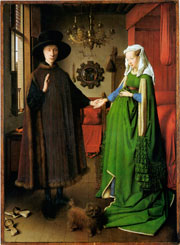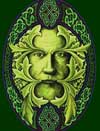The Color of Medications
Taking the Color of Medications Seriously
 The earliest pill emerged in ancient Egypt as a little round ball containing medicinal ingredients mixed with clay or bread. For the next five thousand years - up until the middle of the 20th century - pills were round and white. Color was almost non-existent. “ Over the counter” medications were only available as tablets in ghostly white or pasty pastel hues; likewise prescription medications were colorless pills encased in clear or transparent orange vials. Liquids, with the exception of Pepto-Bismol’s pink, were drab as well.
The earliest pill emerged in ancient Egypt as a little round ball containing medicinal ingredients mixed with clay or bread. For the next five thousand years - up until the middle of the 20th century - pills were round and white. Color was almost non-existent. “ Over the counter” medications were only available as tablets in ghostly white or pasty pastel hues; likewise prescription medications were colorless pills encased in clear or transparent orange vials. Liquids, with the exception of Pepto-Bismol’s pink, were drab as well.
It's a different world today, thanks to advances in technology. The color transformation started in the '60s and accelerated in 1975 when the new technology of “softgel” capsules made colorful medications possible for the first time. Shiny primary colors such as cherry red, lime green and tangy yellow arrived first. Today's gel caps can be tinted to any of 80,000 color combinations. As for tablets, continuous advancements in technology consistently bring new and colorful coating products to market.
On the other hand, does color really matter? Aside from the obvious fact that pills are more attractive to the eye, color has indeed benefited consumers as well as the pharmaceutical companies in several very functional ways. First of all, color helps the consumer distinguish the non-prescription or prescription medications from other tablets or capsules. As testimony to the serious nature of this issue, The New York Times called patients’ failure to take medications as prescribed the world's “other drug problem.”
First of all, color helps the consumer distinguish the non-prescription or prescription medications from other tablets or capsules. As testimony to the serious nature of this issue, The New York Times called patients’ failure to take medications as prescribed the world's “other drug problem.”
This is especially relevant for the elderly who get confused when they take various medications, most of which are small white tablets. Consider the statistics: The US Senate's Aging and Youth Committee reported that the typical Medicare beneficiary uses an average of 18 to 24 prescriptions a year. (Source) Researchers have also found that patients who took more drugs on a daily basis preferred bright pill colors. Consequently, color and color combinations are a powerful way to create emotional appeal and reduce medical errors.
Consider another fact: Patients respond best when color corresponds with the intended results of the medication. For example, calm blue for a good night's sleep and dynamic red for speedy relief. Or consider a reverse scenario: fire red capsules for acid reflux or murky bile green for nausea.
A similar benefit is rooted in the synaesthetic effects of color - and specifically a color's associations with smell and taste. Even early civilizations such as the Romans recognized that people "eat with their eyes" as well as their palates. As proof, butter has been colored yellow as far back as the 1300s.![]() Although technically we don't “eat” pills, we do taste and swallow them. What would a grey pill taste and smell like? Smoky, fruity or moldy? How about a pink pill? Sour, bitter, or sweet? Which one would be easier to swallow? Furthermore, synaesthetic effects of colors also include associations with temperature. For example, a blue pill is cool, an orange pill, hot.
Although technically we don't “eat” pills, we do taste and swallow them. What would a grey pill taste and smell like? Smoky, fruity or moldy? How about a pink pill? Sour, bitter, or sweet? Which one would be easier to swallow? Furthermore, synaesthetic effects of colors also include associations with temperature. For example, a blue pill is cool, an orange pill, hot.
Aside from countless functional benefits for the consumer, color is now playing an even more powerful role in transforming the plain white pill into a unique, brand image. This has become even more significant due two recent events that have transformed marketing – and the role of color - in the pharmaceutical industry.
First, many medications – previously available only with a prescription - are now available as “over the counter” (OTC) products, without a prescription in the US. This means that customers are shopping for medications and making decisions in stores. In fact, recent research by the Henley Centre reports that 73% of purchasing decisions are now made in-store. Therefore, it's even more important for pharmaceutical products to catch shopper's eye and to convey information effectively. As competition heats up, color and design are critical to the brand. Consider the packaging and advertising for the new OTC, Celebrex: tranquil blue skies and the greener pastures of relief from suffering.
Second, five years ago, the Food and Drug Administration (U.S.) relaxed its restrictions on direct-to-consumer marketing of pharmaceuticals. As a result, broadcast and print advertising exploded. Just turn on your television and note which drugs are being marketed aggressively. “Ask your doctor about the purple pill….” And it's not limited to television. Print advertisements are predominantly purple and the product's web site is hosted at http://www.purplepill.com. (Note: US style DTC advertising is not permitted in the UK and Europe with the exception of a live broadcast, such as the Super Bowl, that includes pharmaceutical advertising.)
Consequently, drug companies are leaving nothing to chance. The color and shape of the pills, and the names and imagery used to sell products are heavily researched and tested, much like the drugs themselves.
Color has been elevated to a “powerhouse” status because it is the most fundamental part of a drug's personality. As is the case with all products – from computers to colas - purchasing decisions are not just based on what a product looks like (visual brand) but on the idea of the brand (its core brand value), how customers feel about it (emotional brand). In other words, color has the unique ability to do all three simultaneously – to create emotional appeal, to communicate functional values and benefits (such as reliable pain relief), and to distinguish the brand from others.
A significant example of the critical role colors play is the competition between two prescription medications for male virility: Viagra and Levitra. Viagra, a diamond-shaped blue pill, was introduced in 1997. It immediately became an overnight sensation- one of the most successful prescription medications in the pharmaceutical history – with sales of the drug totaling $1.74 billion in one year alone. In 2002, the marketing groups of a rival product, Levitra, brainstormed the issue of color for their brand. The purpose was to figure out "how to beat the blues," referring to Viagra's sky-blue tablets.
Viagra, a diamond-shaped blue pill, was introduced in 1997. It immediately became an overnight sensation- one of the most successful prescription medications in the pharmaceutical history – with sales of the drug totaling $1.74 billion in one year alone. In 2002, the marketing groups of a rival product, Levitra, brainstormed the issue of color for their brand. The purpose was to figure out "how to beat the blues," referring to Viagra's sky-blue tablets. Extensive market research concluded that consumers didn't "resonate with the imagery" of Viagra. They found that the blue color was too cool and was equated with being sick. The goal was to come up with an enticing color and logo for Levitra. After extensive testing, the team presented Levitra's color: orange, an extremely vibrant and energetic color. And the logo? An orange and purple flame.
Extensive market research concluded that consumers didn't "resonate with the imagery" of Viagra. They found that the blue color was too cool and was equated with being sick. The goal was to come up with an enticing color and logo for Levitra. After extensive testing, the team presented Levitra's color: orange, an extremely vibrant and energetic color. And the logo? An orange and purple flame.
In conclusion, color does indeed matter - 80% of visual information is related to color - and this is especially true for pharmaceutical products. Color is functional. Color subliminally and overtly communicates information and provides many other operational benefits.
On the other hand, color may not matter in the future of prescription medications tablets and capsules. Scientists have created a coin-sized microchip drug dispenser that may be implanted under the skin. It would be programmed to release medications in concentrated formulas -- all on different schedules. Sensors may even be attached to the chip to detect the level of a drug in your body and then add more as needed. Source: Science News
©Jill Morton, All rights reserved
Learn more :Color Psychology in Medicine, an article by Jill Morton /Color Matters for Munsell
Also from Color Matters

Stay in touch with the latest news about color.
Subscribe to the free bi-monthly newsletter.
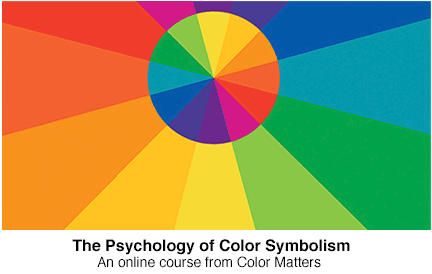 Learn how color affects the mind and body in "The Psychology of Color Symbolism".
Learn how color affects the mind and body in "The Psychology of Color Symbolism".
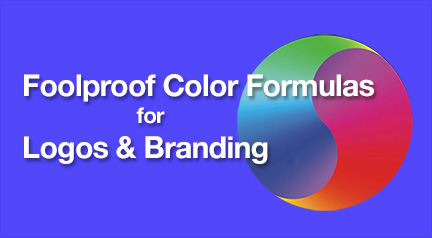
We just launched two new online courses about color for logos and branding. Learn how to empower your brand with color in two hours time or less. See "Color Psychology for Logos and Branding" and "Color Harmony for Logos and Branding"








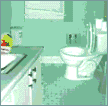 Given this state of affairs, over 140,000 people have taken the
Given this state of affairs, over 140,000 people have taken the  Of note were the 1,000 plus terms used to define whites, off-whites, and beige. Adjectives such as glistening, pearly, shimmery, blinding, glittering, and gleaming were frequently coupled with white. More common terms, such as ivory, ecru, parchment, vanilla and cream, were used for off-whites and very light browns. Once again, some imaginative terms arose. "Time Card Beige" and "Nicotine Cream" won the awards in this area of the color wsheel.
Of note were the 1,000 plus terms used to define whites, off-whites, and beige. Adjectives such as glistening, pearly, shimmery, blinding, glittering, and gleaming were frequently coupled with white. More common terms, such as ivory, ecru, parchment, vanilla and cream, were used for off-whites and very light browns. Once again, some imaginative terms arose. "Time Card Beige" and "Nicotine Cream" won the awards in this area of the color wsheel.
